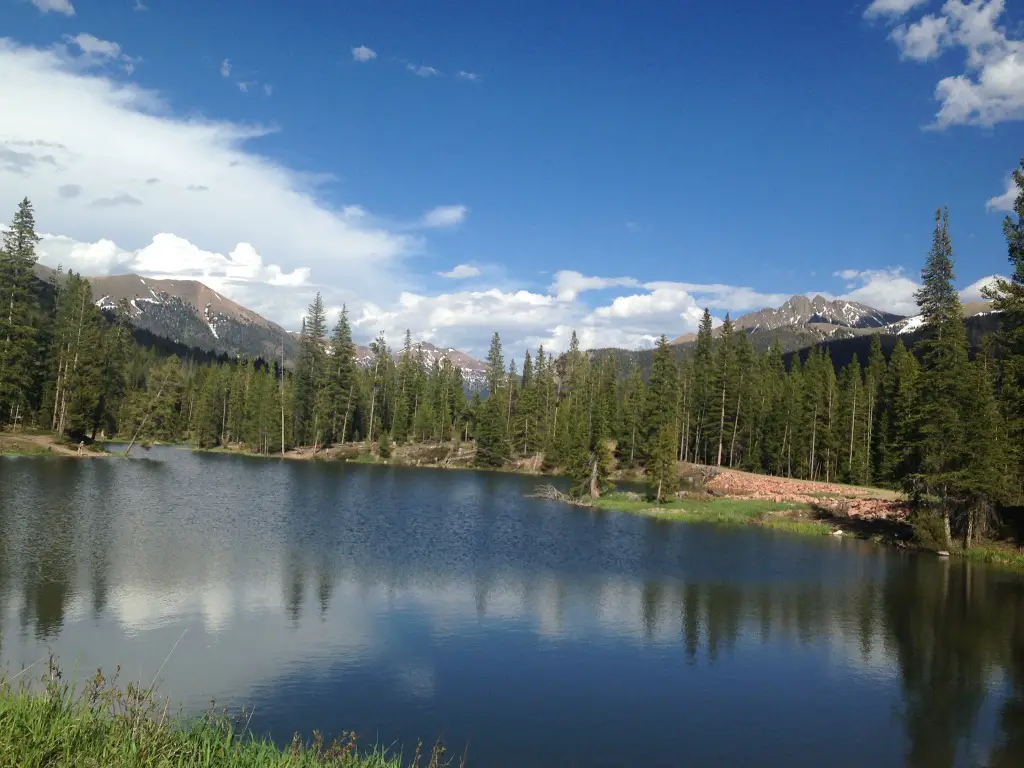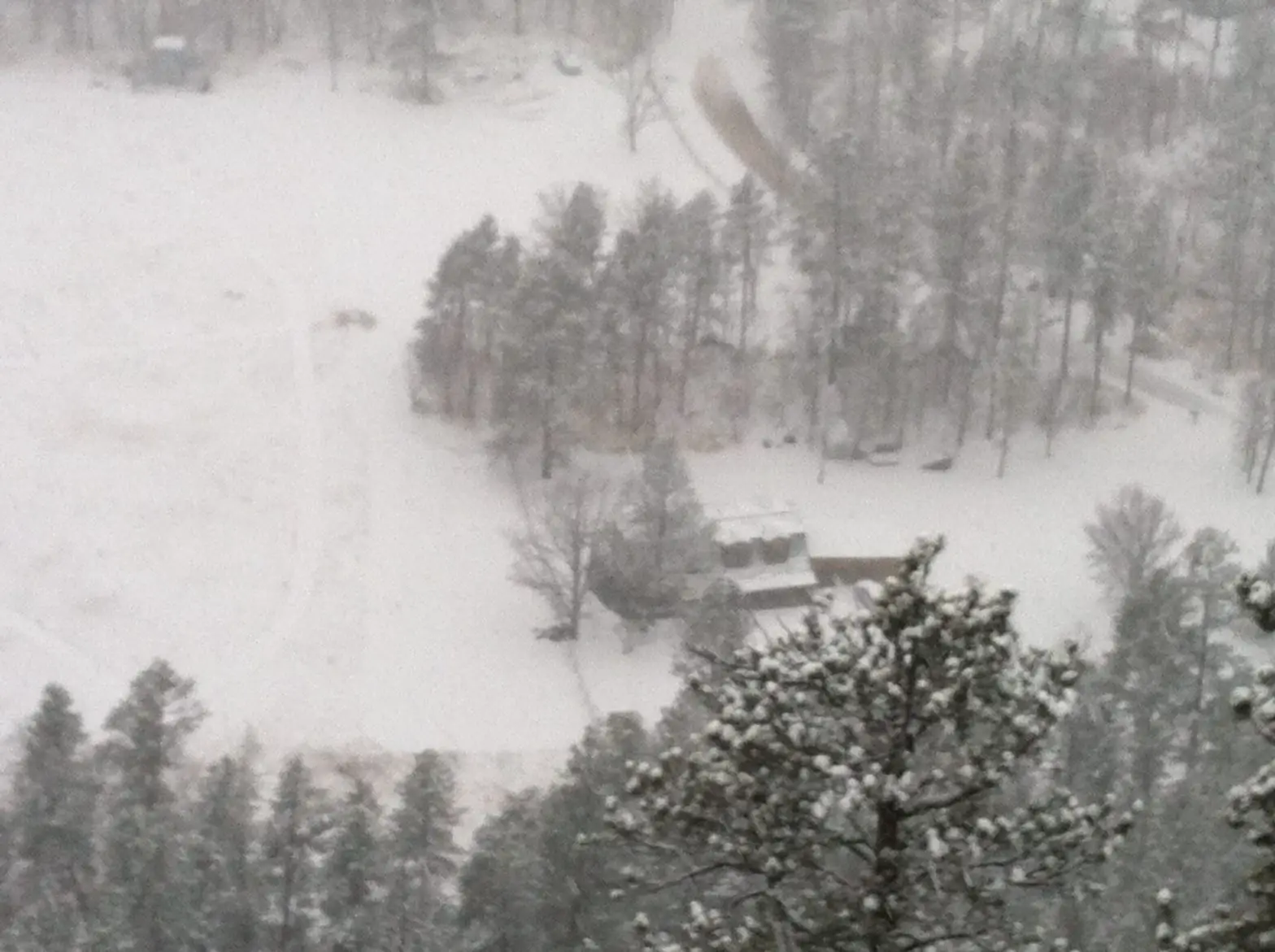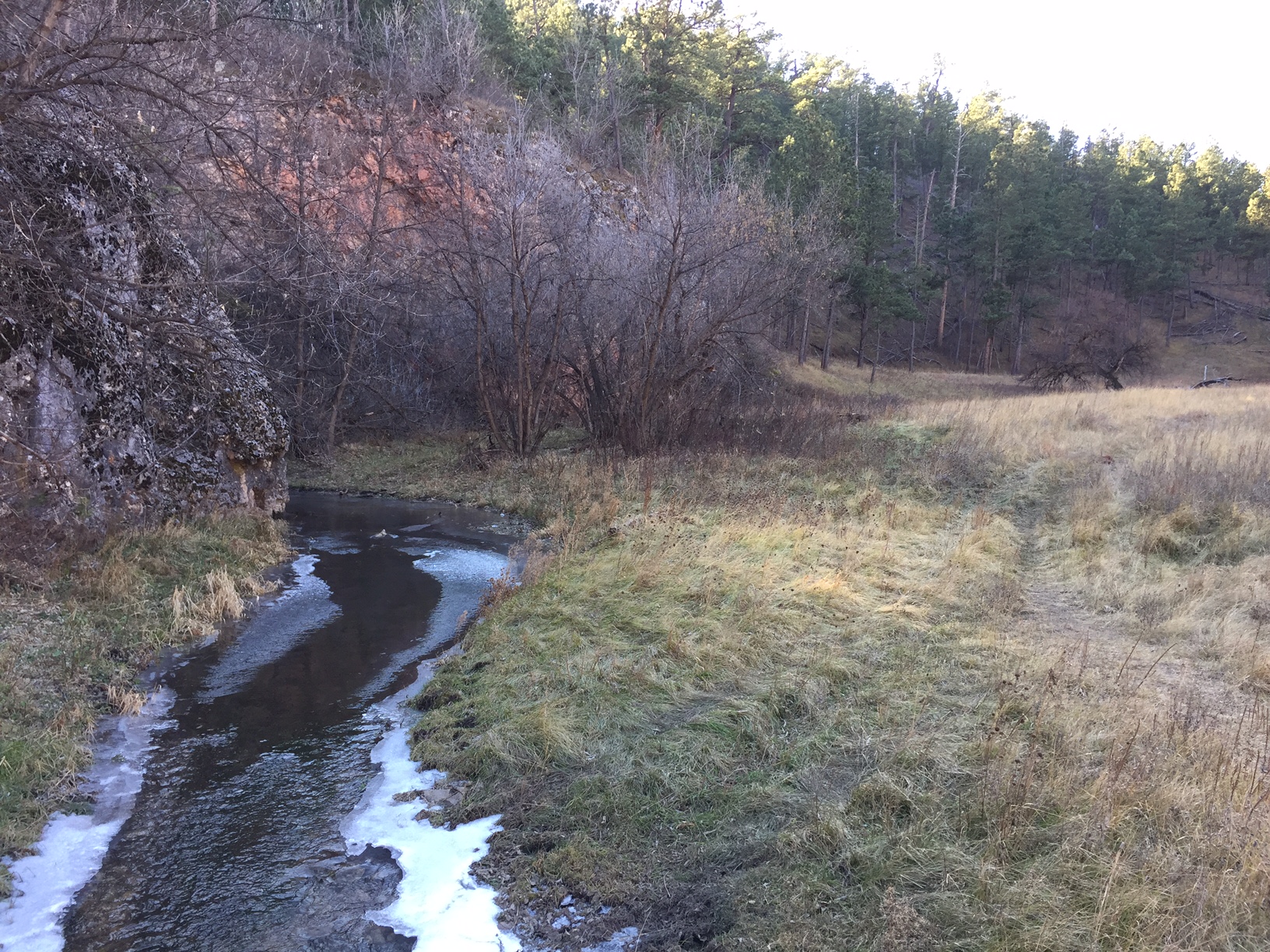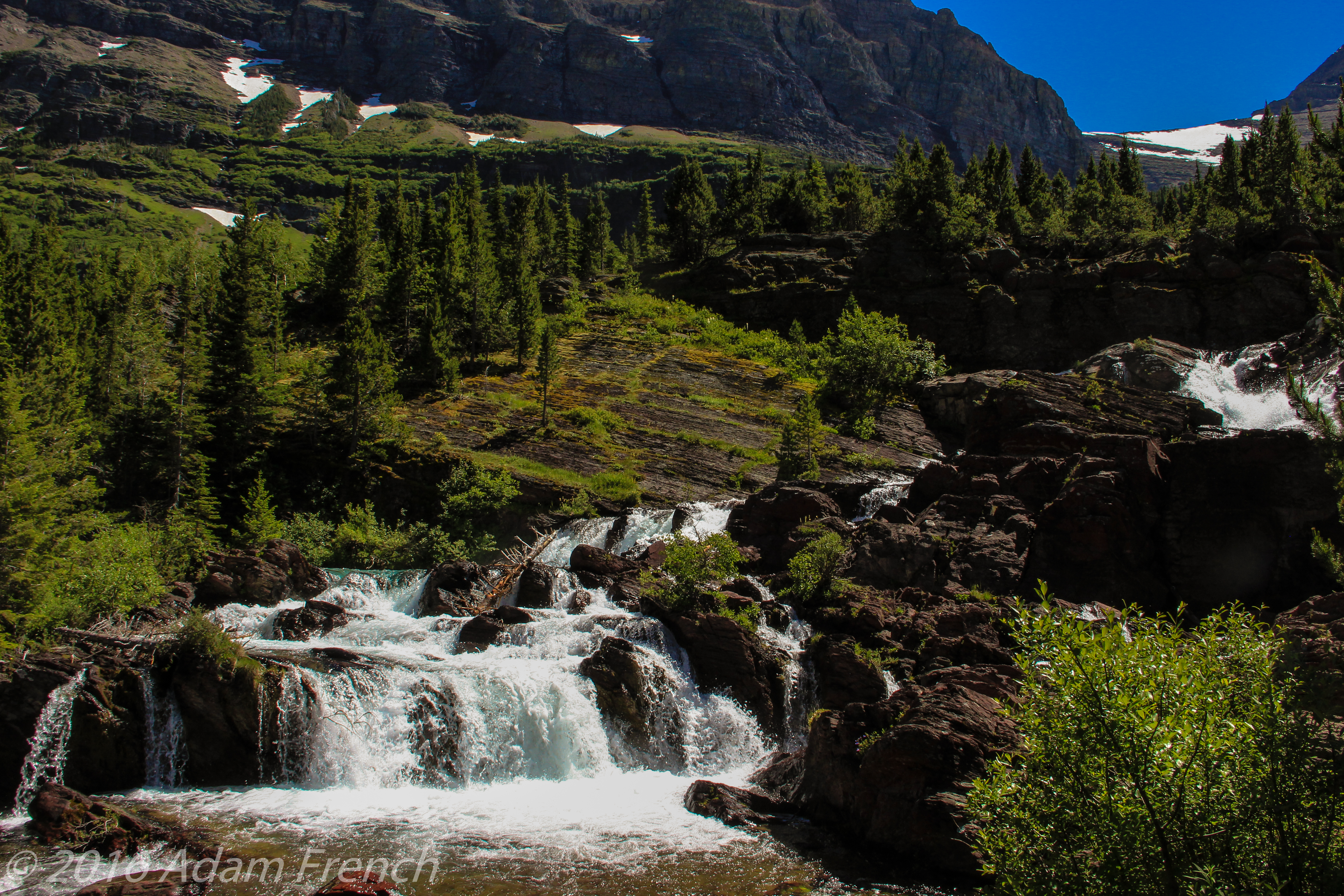We spent the second week of our 2017 Road Trip enjoying 11 Don’t Miss Sites in Colorado. That state is, by far, one of my favorite locations in the entire country to visit (and we’ve seen the 48 Continental US States!) Its beauty is indescribable and pictures don’t truly do it justice.
The following is a rundown of the highlights of our tour around the state. Thanks again to Mr. Trekker for some of the pictures!
Trinidad, Colorado
Trinidad is an old-school, Western town in far Southwestern Colorado, only about 15 miles from the New Mexico border. It’s a cute little community that’s been well-maintained and has seen some modern updates in recent years.
I’m still adjusting to the whole “pot legalization thing” in Colorado. 😂 It’s not my fault, I was a DARE child of the ’90s, I grew up being taught that it was bad (of course this was by the same people who also taught us that Pluto was a planet–and people wonder why I have a skeptical nature!) Then there’s the issue where it’s legal in the state but not in National Parks within that state because that’s Federal land and it’s still illegal Federally. Like every good Libertarian, I’m willing to tolerate it but *sigh*, does this make anyone else’s brain hurt?
The next day, we headed West from Trinidad on Route 160, bound for Mesa Verde National Park! 12 years ago we visited the park and parts of Western Colorado on our very first road trip, so it was cool going back. Some of it we remembered, but it had been so long that there was plenty that we were seeing again “for the first time”.
Related Posts: 10 “Don’t Miss” Places for your Great Plains Road Trip; Lessons Learned on a Road Trip; 5 “Don’t Miss” Places for Your New Mexico Road Trip
Having just recently survived a bout with an aggressive flu, I was still not my best self at this point, though, as we were entering some beautiful country we wanted to do a little sightseeing. The first pass we arrived at (and the first overlook) we stopped to take some pictures. I stepped out of the car, took one step on the unsteady gravel in my flip-flops, and skidded to my knees. The fall left a lovely road rash in its wake (because this trip just hadn’t been adventurous enough!)
At first, I figured it was nothing, till I looked down and saw red rivulets running down my leg *sigh*. So, back to the car, we went, with Mr. Trekker coming at me with the first aid kit. Unfortunately, it only had alcohol swabs in it and we were FAR from any modern bathroom with water and soap. Needless to say, Mr. Trekker was NOT my favorite person that day! But, kudos to him, he bandaged me up well (albeit painfully) and I now only have a minor scar to show for my misfortune. 😝
Mesa Verde National Park:
This unique park showcases cliff dwellings from the civilizations who lived there thousands of years ago. Some you can view from overlooks, and some you can actually tour (self-guided and ranger-led). They’ve also got a great campground with spectacular star-gazing opportunities.
Our first trip to the park was one of my first camping experiences out West where there’s far less light pollution. I remember being astounded at the light show the night sky put on (and that’s coming from a girl who grew up on an Indiana farm). It was on my first visit to this park that I fell in love with Colorado and “the West”. I didn’t know then that in six years I’d become a “Westerner” myself!
Unlike many of the national parks (such as Rocky), the campgrounds have modern bathrooms—read, flush toilets, and showers. I’d recommend at minimum a 2-day stay to really get the most out of the park.





Route 550, the Million Dollar Highway:
On our first trip to this area, we stumbled upon this highway accidentally, completely unprepared for what we were about to experience (it was just the most accessible option to get us where we wanted to go). The second time around we knew what we were in for…and were still awed.
Route 550, in western Colorado, runs north to south between Grand Junction and Durango. It is called the Million Dollar Highway because it is so beautiful it offers million-dollar views as it traverses many mountain passes.
If you’ve never traveled this route, I STRONGLY recommend it, though I’d suggest navigating the road from south to north starting in Durango. This ensures your car is on the inside of the sharp turns the majority of the time. If you’re coming from the north you will find yourself frequently perched along cliff edges with nothing between you and the gaping maw of the canyon below than some thin oxygen (there are no guardrails the majority of the drive as the snowplow drivers need space to push the snow off the cliffs in the winter months).
If you can handle the drop-offs, this drive is a must! This area is referred to as the “Switzerland of America” because its incredible mountain vistas rival those found in the immensely beautiful, European country.
I can testify the views here rival those we saw in Glacier National Park on the Going to the Sun Road (though these are more accessible, depending on your location). Also, this road is open all year, weather permitting.
The most popular portion of the drive (between Durango and Ouray) is less than 70 miles in length, but plan for it to take several hours (that was our big mistake the first go-around). It’s a slow drive, in some areas the suggested speed limit on the curves is only 10 – 15 mph (and trust me, they aren’t joking). It can be slower if you find yourself traveling behind larger, slower-moving vehicles.
The most intense (and most beautiful) portion of the route runs the 25 miles between Silverton and Ouray. Stops are frequently caused by construction in the summer months as workers are constantly fighting the ongoing battle with natural erosion. Rockslides are also common (as well as avalanches in the winter).
This drive can be frightening for us acrophobes with its steep drop offs but the immensely beautiful views are worth it! There’s plenty of skiing, 4×4 trails, hiking, camping, rafting, and a slew of other activities available in this corner of Colorado, so be sure to put it on your “must-see” list.


Telluride, Colorado:
Telluride was about what I would expect from a ski town (the Trekkers are uncoordinated and therefore not downhill skiers). It was lovely, though we were a little early for the summer season so the upper roads weren’t clear of snow or open yet. We walked down the road to view a staple of the town, Bridal Veil Falls. The road up to it was open for hiking, but as I still wasn’t at my best we decided to skip that option this trip. Instead, we opted for lunch at Brown Dog Pizza, a local joint where I can honestly say I had the best cheese calzone I have ever eaten, hands down.
The ricotta cheese seemed as though it had been whipped into an airy froth. I’m no food connoisseur, but it was incredible.

Ouray, Colorado (pronounced U-Ray):
The drive into town from the south is one of the most beautiful views I’ve ever seen. THIS I remembered from 12 years ago. You descend from the harrowing Million Dollar Highway and this small oasis of civilization opens up before you in the valley, beckoning you down from the peaks. (If you’ve seen the show “The Ranch” on Netflix, this town is the one used in the opening credits).
Ridgeway State Park:
Ridgeway State Park has one of my favorite campgrounds we visited on the entire trip (part of the reason we spent three days there!) It’s located just north of Ridgeway on Route 550 (north of Ouray, so out of the peaks). They have a lovely, shaded, tent-camping area that’s back off the road, complete with level, graded tent sites, modern restrooms (and showers!), all surrounded by cedar trees.
This brings me to another point. Apparently, it’s perfectly legal to smoke pot in Colorado State Parks, but don’t you dare hang a hammock from a cedar tree! I’m sure there is a good reason for this due to the risk of damage to the trees, and I’m all about protecting nature, but this just seemed to be a bit of a misalignment of priorities to me! 😝
The park surrounds a picturesque reservoir set against a backdrop of snow-capped Rockies to the east. Its location makes it an ideal base camp for numerous day trips and activities.


True Grit Film Sites
The park also happens to be near the filming location of the original western, True Grit (the one from 1969 with John Wayne, not the new version). If you’re a good enough detective there are numerous filming sites you can locate in this area (though please be aware, many of these areas are located on private land and you are trespassing if you travel on them without the owner’s permission. Please be respectful of private property!) Click here for some help finding the sites!
We were able to view Mattie Ross’ Ranch, Courthouse Mountain, Chimney Peak, and the meadow where the shootout scene was filmed, without difficulty. The last three can be found off of Route 8 (to reach this travel east from Route 550). You’ll reach The Meadow about ½ mile before the summit of Owl Creek Pass. Courthouse Mountain and Chimney Peak are visible from The Meadow and Sleeping Rock is located at the summit of the pass.


Mattie Ross’ Ranch is located off of Last Dollar Road which is found off of Highway 62 (the road from Ridgeway to Telluride).


Grand Mesa National Forest:
Grand Mesa National Forest is another “must-see” location in the mountains east of Grand Junction. It’s primarily used for cross-country skiing and snowmobiling in the winter months. It’s got some great campground/fishing/hiking opportunities as well, but we were, unfortunately, too early in the season to really take advantage of these options. The hiking trails weren’t yet open as there were still feet of snow drifted on them in some places. Click here for more info on our return trip to Grand Mesa!
During the peak of summer, this would be a prime place to escape the heat though, the day we were there it was near 90 in the closest town on the valley floor and it was in the ’40s, and raining/snowing large glops on us at the summit.

Rifle/Rifle Falls, Colorado:
We spent our final hotel stay of the trip in the small town of Rifle, Colorado. This is an adorable, little town with an awesome state park!
Rifle Falls State Park was absolutely beautiful. It was the only place I’ve ever been where you can traverse walkways that stick out over the TOP of the falls! The caves at the bottom were picturesque as well (and provided a cool respite from the summer heat).


State Forest State Park:
$20/night for a campsite; going several days with no indoor plumbing (or showering); a DISGUSTING pit toilet (seriously, it was an upside-down pail sitting over a stinky hole in the ground); BUT…eating dinner while a cow moose and two calves eat theirs, in a field, a few thousand yards away with the Rockies as a backdrop…PRICELESS!!!
We spent the last three nights of our trip at State Forest State Park which is renowned for its moose sightings (many were re-introduced here back in the 90s.). The park actually claims to be the “Moose Viewing Capital of the World!”
It definitely offered the best moose sightings we had ever experienced…until our Labor Day camping trip in the Big Horns later that year…you can read about that here!




CLOSE ENCOUNTER of the Mountain Lion Kind!!!
The final night of our trip I had a true close encounter (at least I think I did, it was dark and it was over fast!) It was late and we were the only people still up in the half-full campground. Our campsite was perched on a hill backed by the forest and fronted by a lake.
The first night, we spied a moose family skirting the campground using a gully to get to the lake for their evening drink, so we knew it was a popular thoroughfare for the local wildlife. We were waiting for the fire to burn down and out of the corner of my eye, I spotted movement in the empty campsite across the road (maybe 30 yards away and downhill from our site). At first, I thought it was a deer I had seen meandering around earlier that evening…and then I realized the “deer” had a long tail…
Interesting side note, many stories I’ve heard of people spotting mountain lions start with, “I thought it was a deer till I realized it had a long tail…” 😮
…then I thought it was a dog from one of the neighboring campsites, but I was pretty sure he was in the tent with his family…and the creature I spotted didn’t move like a dog…
Its movements were stealthy, fluid, and sleek; beautiful actually. I couldn’t tear my eyes away. It almost glided across the ground. It reminded me of watching a cat jumping onto a high shelf when you’re sure any minute it will send objects flailing into space but instead it glides gracefully around them.
It was visible for only a few seconds, once it saw me it hightailed it out of there (which is exactly what we WANT wild animals to do!), and I wasn’t able to get Mr. Trekker’s attention quickly enough for him to see it. We looked for tracks the next morning and didn’t find any but the ground was very dry and hard so this wasn’t a surprise. I can’t prove it but…I think I saw my first mountain lion that night (that’s my story and I’m sticking to it! 😉)
Oregon Trail Ruts, Guernsey, Wyoming:
On the last day of our trek, we stopped for lunch in Guernsey, Wyoming at the Oregon Trail Ruts State Historic Site. There we viewed wagon wheel ruts left forever engraved on the landscape by the pioneers traveling the Oregon Trail.
You could almost hear the lowing of oxen, the clanking of household items, and the creaking of the wagons as they slowly made their way across the prairie. You could almost smell the rank odor of animal and human sweat mixed with the constant cling of dust stirred up by the plodding of the animals’ hooves.
It was humbling to think that we traveled almost 3500 miles on our two-week road trip, crisscrossing across eight states and visiting countless places in our air-conditioned, all-wheel-drive car, with a suspension that gently glides across any bumps in our path (on the paved or graded gravel roads we drove on). Whereas these people traveled thousands of miles in a wagon train, a trip that took MONTHS as they slowly crept their way across the bumpy, muddy, rutted, rock-strewn ground, and lived under constant threat of death by exposure, disease, or attack.
When I got sick we drove five minutes to the local Urgent Care, it took maybe an hour to get seen, then we went to the Walgreens across the street for medicine and I was back in the hotel room on the road to recovery 20 minutes later. Back in the days of the wagon trains the same ailment likely would have meant DAYS of misery as the best of potential outcomes.

A few final pictures from our jaunt around Colorado. If you haven’t been there, I STRONGLY encourage you to put it on your bucket list. You won’t regret it!



Have you visited any of these places? Tell me about your adventure in the comments!
Did you enjoy this post? Pin it!
Like what you read here today? Please feel free to leave a comment, like or share this post! Add your email at the bottom of the page, or the sidebar to the right, to be notified when a new post is published. By signing up for the email list, you will also receive a free copy of the Tranquil Trekker’s Top 10 Tips of Trekking Do’s and Don’ts!
You can also follow the blog on social media by clicking the links below!
















































